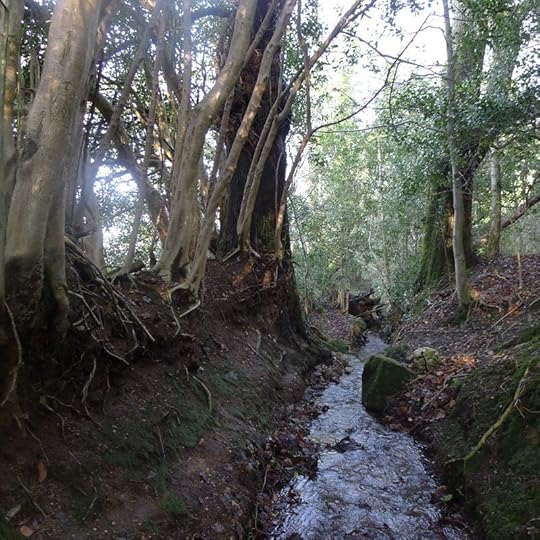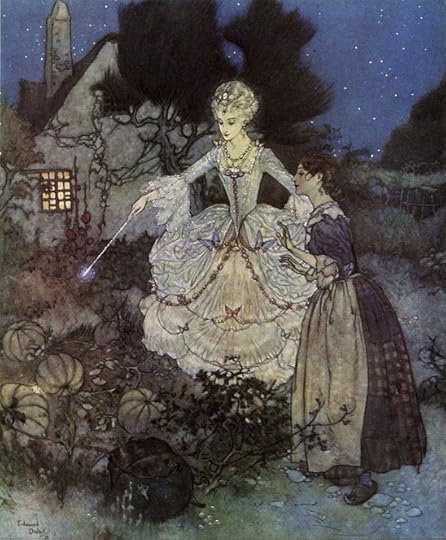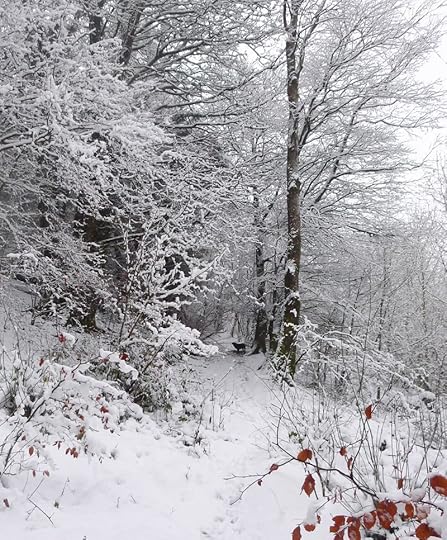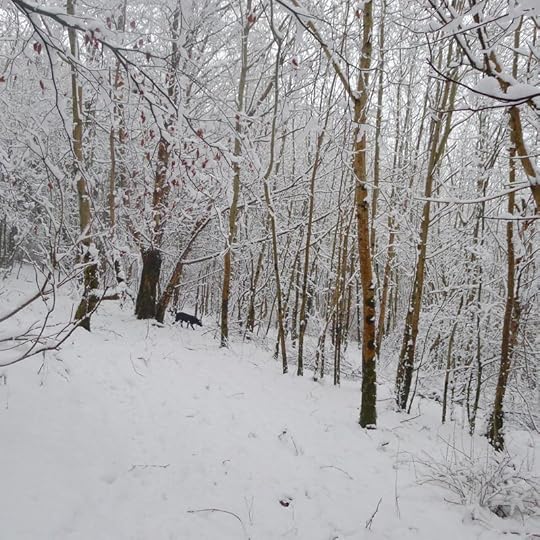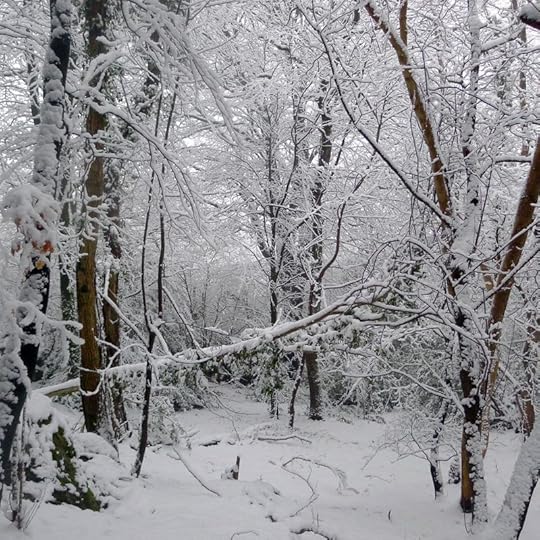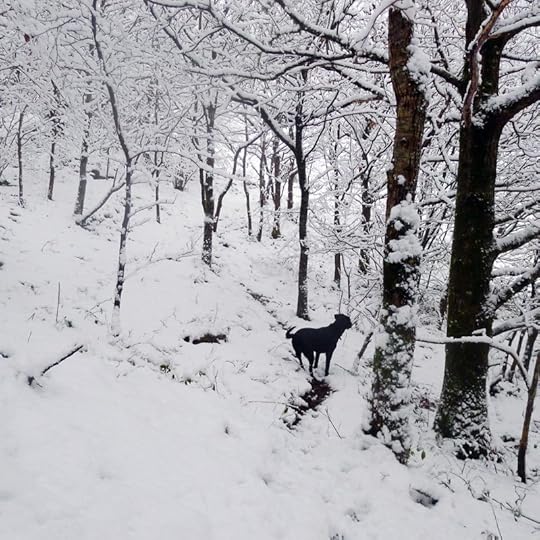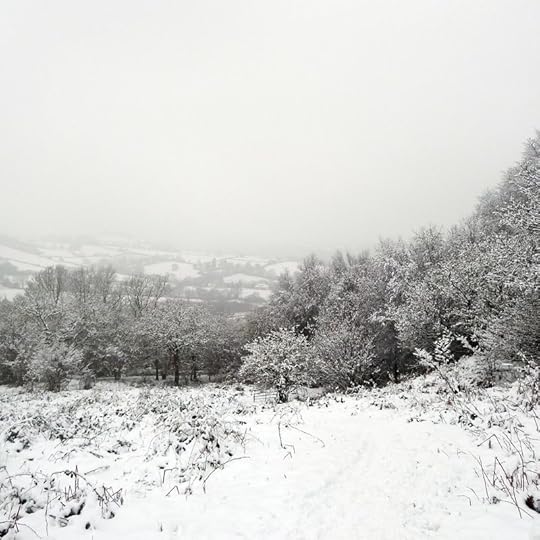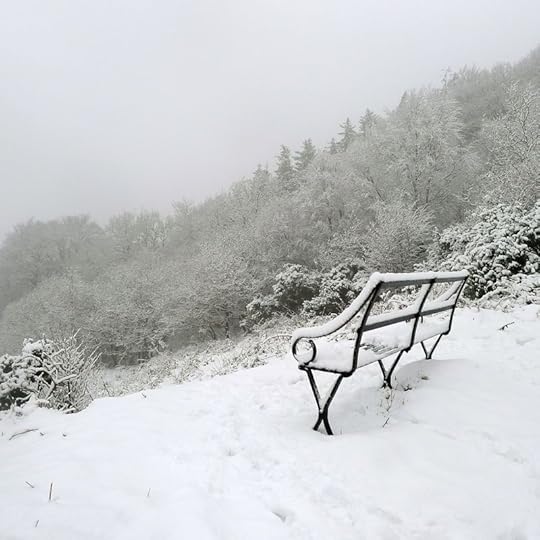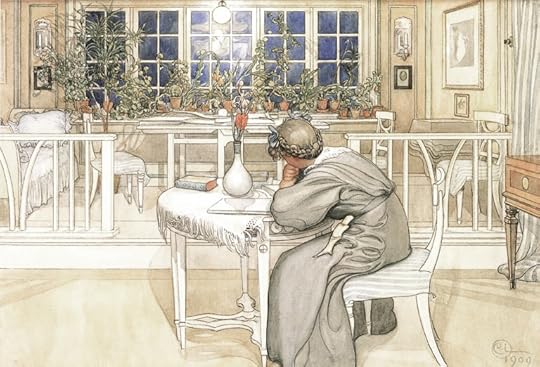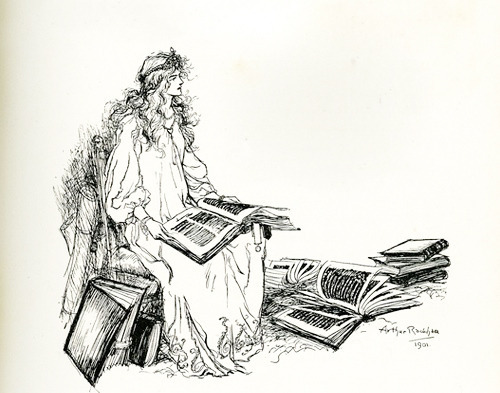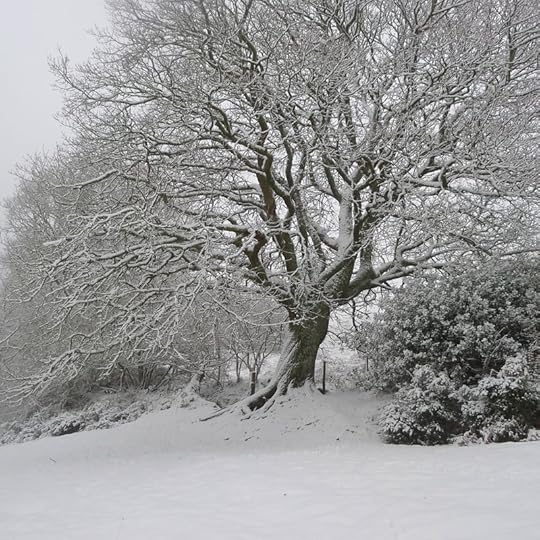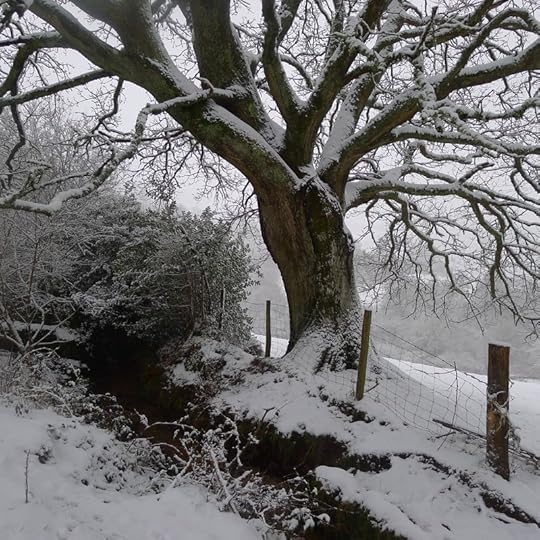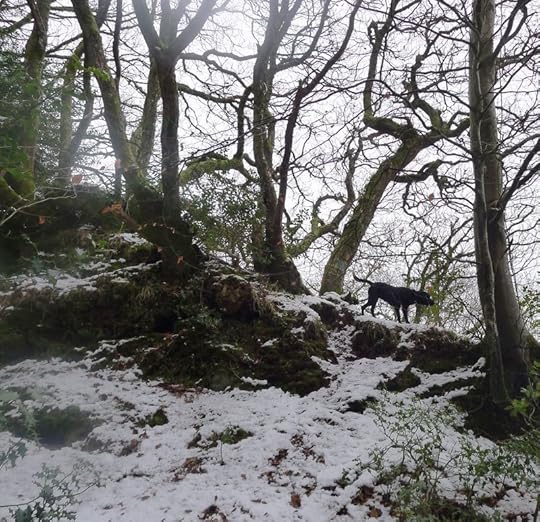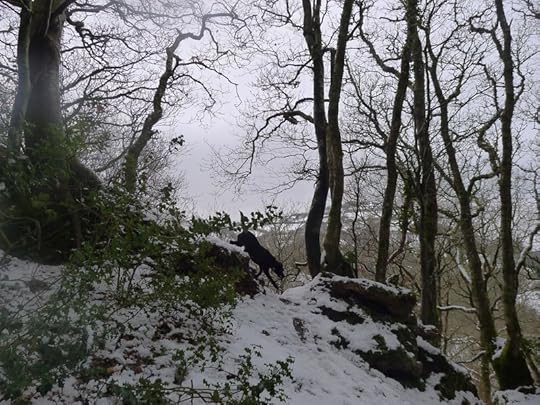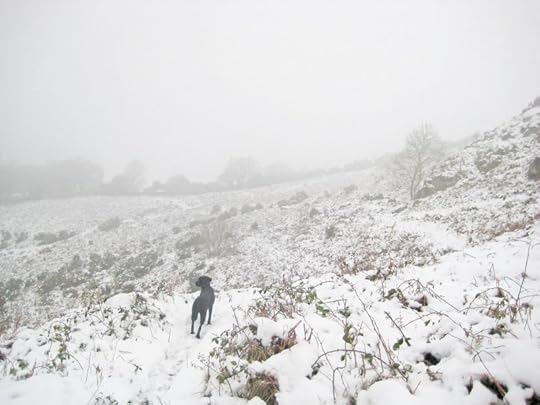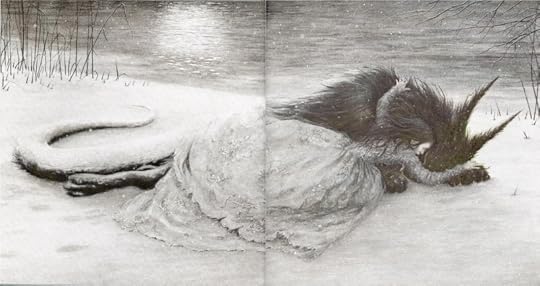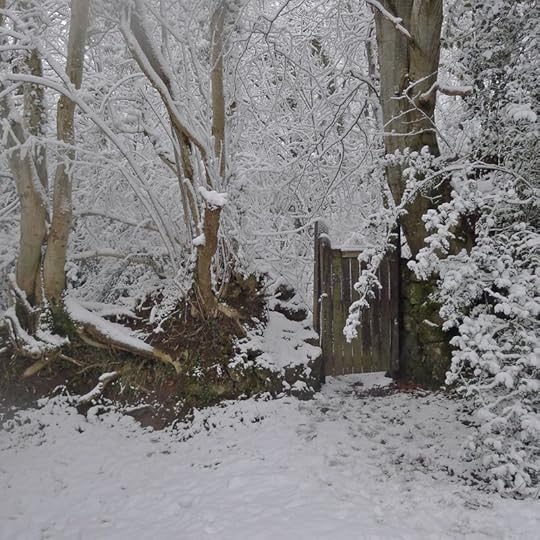Terri Windling's Blog, page 200
January 31, 2013
Revelation
"Literature, like magic,
has always been about the handling of secrets, about the pain, the
destruction and the marvelous liberation that can result when they
are revealed. Telling the truth, when the truth matters most, is
almost always a frightening prospect. If a writer doesn’t give away
secrets, his own or those of the people he loves; if she doesn’t
court disapproval, reproach and general wrath, whether of friends,
family, or party apparatchiks; if the writer submits his work to an
internal censor long before anyone else can get their hands on it,
the result is pallid, inanimate, a lump of earth. The adept handles
the rich material, the rank river clay, and diligently intones his
alphabetical spells, knowing full well the history of golems: how
they break free of their creators, grow to unmanageable size and
power, refuse to be controlled. In the same way, the writer shapes
his story, flecked like river clay with the grit of experience and
rank with the smell of human life, heedless of the danger to himself,
eager to show his powers, to celebrate his mastery, to bring into
being a little world that, like God’s, is at once terribly
imperfect and filled with astonishing life."
― Michael Chabon
"At some point I believe one has to stop holding back for fear of
alienating some imaginary reader or real relative or friend, and come
out with personal truth.” ― May Sarton
“Writing is both masking and unveiling.”
― E.B. White
So true.
Images above:A detail from "A Lady Writing" by Johannes Vermeer (1632-1675) and "The Fox Maiden" by Susan Seddon Boulet (1941-1997). More on the subject of writing and revelation in this older post: Dare to be Foolish.
January 30, 2013
The secret handshake
“Every work of art is one half of a secret handshake, a challenge that
seeks the password, a heliograph flashed from a tower window, an act of
hopeless optimism in the service of bottomless longing. Every great
record or novel or comic book convenes the first meeting of a fan club
whose membership stands forever at one but which maintains chapters in
every city -- in every cranium -- in the world. Art, like fandom,
asserts the possibility of fellowship in a world built entirely from the
materials of solitude. The novelist, the cartoonist, the songwriter,
knows the gesture is doomed from the beginning but makes it anyway,
flashes his or her bit of mirror, not on the chance that the signal will
be seen or understood but as if such a chance existed.”
― Michael Chabon
“A book is more than a verbal
structure or series of verbal structures; it is the dialogue it
establishes with its reader and the intonation it imposes upon his
voice and the changing and durable images it leaves in his memory. A
book is not an isolated being: it is a relationship, an axis of
innumerable relationships.” ― Jorge Luis Borges
“I think every work of art is an act of faith, or
we wouldn't bother to do it. It is a message in a bottle, a shout in the
dark. It's saying, 'I'm here and I believe that you are somewhere and
that you will answer if necessary across time, not necessarily in my
lifetime.' ” - Jeanette Winterson
"Art is an effort to create, beside the real world, a more human world." - André
Maurois

Images above: The stream that runs behind my studio, photographed yesterday. Holly, ivy, and moss keep the woodland green throughout the winter months. Last week's snow has vanished completely.
January 29, 2013
Shaping stories, and being shaped by them in turn
“The store of fairy tales, that blue
chamber where stories lie waiting to be rediscovered, holds out the
promise of just those creative enchantments, not only for its own
characters caught in its own plotlines; it offers magical
metamorphoses to the one who opens the door, who passes on what was
found there, and to those who hear what the storyteller brings. The
faculty of wonder, like curiosity can make things happen; it is time
for wishful thinking to have its due.” - Marina Warner (from The Beast to the Blonde: On Fairy Tales and Their Tellers)
“Someone needs to tell those tales. When the battles are fought and won
and lost, when the pirates find their treasures and the dragons eat
their foes for breakfast with a nice cup of Lapsang souchong, someone
needs to tell their bits of overlapping narrative. There's magic in
that. It's in the listener, and for each and every ear it will be
different, and it will affect them in ways they can never predict. From
the mundane to the profound. You may tell a tale that takes up
residence in someone's soul, becomes their blood and self and purpose.
That tale will move them and drive them and who knows what they might do
because of it, because of your words. That is your role, your gift.
Your sister may be able to see the future, but you yourself can shape
it, boy. Do not forget that... there are many kinds of magic, after
all.” - Erin Morgenstern (from The Night Circus)
“We who make stories know that we tell lies for a living. But they are
good lies that say true things, and we owe it to our readers to build
them as best we can. Because somewhere out there is someone who needs
that story. Someone who will grow up with a different landscape, who
without that story will be a different person. And who with that story
may have hope, or wisdom, or kindness, or comfort. And that is why we
write.” - Neil Gaiman (from The Graveyard Book)
“People think that stories are shaped by people. In fact, it's the other way around.” - Terry Pratchett (from Witches Abroad)
Art above: "Cinderella" by Edmund Dulac (1882-1953), "Snow White" by Angela Barrett, "Round the Oak Tree" by Kelly Louise Judd, and "Thumbelina" by Lisbeth Zwerger.
January 28, 2013
The way things change
A few last snow pictures for you, for in fact the snow is already
gone -- it vanished as suddenly as it came. We went to sleep
one night to icy white slopes and woke to find green grass hills again, snowmelt flooding the rivers and streams. Not a patch of snow or ice was left. Things can change so quickly.
This time last year, I was traveling through a deep, dark forest that seemed to have no end; now the road winds in new directions and I'm grateful for all that's changed since then: for the ways that bodies and psyches heal; for creative hands and resilient spirits; for the blessings of family, community, and the quiet miracle of daily living.
Today's quotes go out to any of you who are walking through your own dark woods right now. May there be trees to befriend you, and foxes to guide you, and stories to light the way.
"In many shamanic societies, if you came
to a medicine person complaining of being disheartened, dispirited,
or depressed, they would ask one of four questions: When did you stop
dancing? When did you stop singing? When did you stop being enchanted
by stories? When did you stop finding comfort in the sweet territory
of silence?" - Gabrielle Roth
'“Stories are medicine. I have been taken with stories since
I heard my first. They have such power; they do not require that we do, be, act, anything — we need only listen.” - Clarissa Pinko Estes
“I had lines inside me, a string of guiding lights. I had language.
Fiction and poetry are doses, medicines. What they heal is the rupture
reality makes on the imagination. I had been damaged, and a very
important part of me had been destroyed - that was my reality, the facts
of my life. But on the other side of the facts was who I could be, how
I could feel. And as long as I had words for that, images for that,
stories for that, then I wasn't lost.”
- Jeanette Winterson
“There
are certain children who are told they are too sensitive, and there are
certain adults who believe sensitivity is a problem that can be fixed in
the way that crooked teeth can be fixed and made straight. And when
these two come together you get a fairytale, a kind of story with
hopelessness in it. I believe there is something in these old
stories that does what singing does to words. They have transformational
capabilities, in the way melody can transform mood. They can't
transform your actual situation, but they can transform your experience
of it. We don't create a fantasy world to escape reality, we create it
to be able to stay. I believe we have always done this, used images to
stand and understand what otherwise would be intolerable.” - Lynda Barry (via Gail Arlene de Vos)
“When you enter the woods of a fairy tale and it is night, the trees
tower on either side of the path. They loom large because everything in
the world of fairy tales is blown out of proportion. If the owl shouts,
the otherwise deathly silence magnifies its call. The tasks you are
given to do (by the witch, by the stepmother, by the wise old woman) are
insurmountable - pull a single hair from the crescent moon bear's
throat; separate a bowl's worth of poppy seeds from a pile of dirt. The
forest seems endless. But when you do reach the daylight, triumphantly
carrying the particular hair or having outwitted the wolf; when the owl
is once again a shy bird and the trees only a lush canopy filtering the
sun, the world is forever changed for your having seen it otherwise.
From now on, when you come upon darkness, you'll know it has dimension.
You'll know how closely poppy seeds and dirt resemble each other. The
forest will be just another story that has absorbed you, taken you
through its paces, and cast you out again to your home with its rattling
windows..." - Elizabeth J. Andrew
"Where you come from does matter -- but not nearly as much as where you are headed.” - Jodi Picoult
 For more on rites-of-passage journeys in myth and fairy tales, see the Winter 2006 "Healing and Transformation" issue of The Journal of Mythic Arts.
For more on rites-of-passage journeys in myth and fairy tales, see the Winter 2006 "Healing and Transformation" issue of The Journal of Mythic Arts.
January 27, 2013
Tunes for a Monday Morning
Today, four wintry songs from four countries for you...
Above: "Goodbye England (Covered in Snow)" from the English singer/songwriter Laura Marling. Marling, who first started making a name for herself in the London folk scene when she was just 16, turns 23 on Friday. (Happy birthday!) For more Laura Marling, I recommend a video recently recorded in a back alley in Melbourne, Australia: "Don't Ask Me Why/ Salinas."
Below: "January Hymm" by the American alt-folk band The Decemberists (Portland, Oregon), fronted by singer/songwriter Colin Meloy. The song is from their 2011 album The King is Dead.
Below:
"The Winter Hours" by The Deep Dark Woods, from Saskatoon, Canada. The song is from their third album, Winter Hours (2009).
And last:
"Árvas" by the Sami singer/songwriter Sofia Jannok, from Gällivare, Sweden, whose music is influenced by the Sami yoik tradition.
What are your favorite songs of the season...?
January 25, 2013
Silence, 2
“When words become unclear, I shall focus with photographs. When images become inadequate, I shall be content with silence.” - Ansel Adams
It's not really silent when Tilly and I climb our hill in the early morning, of course. There is bird song (cacophanous at this hour), the roar of water in the stream below, the breathing of the wind, and the rustle of a little black dog prowling through the bracken. Yet the sense of silence is a strong one nonetheless, created by the absense of human voices and manmade sounds; a silence that is becoming all too rare these days, and yet remains so necessary. As food fuels the body, silence fuels the spirit and imagination. Or so it is for me.
I cherish (and protect) the early morning silence that fills my studio too, although that isn't a true silence either. There's the humming of the heater, the scritching of a pen on paper, the tap-tap-tap of computer keys, the whisper of book pages turning. What I experience as silence is better described as solitude, and yet even that word is not a perfect fit, for my solitude contains multitudes: not only Tilly, snoring beside me, but also the characters conjured as I write, standing here as real as life; and bunny girls leaping and dancing on the walls; and the voices in everything I read, belonging to people both real and imaginary, fully present here either way.
Sara Maitland asks, "Is reading silent in any sensible understanding of that word? Does it
deepen the silence around us or break it up? When we read are we
listening to the author, conversing with the author, or are we looking
more directly into the author’s mind, seeing the author’s thoughts,
rather than hearing her voice? How might one define silence in relation
to the written, as opposed to the spoken, word?"
And these are good questions. What do you think?
The Sara Maitland quote is from A Book of Silence. Her new book, Gossip from the Forest, is wonderful too. For a list of thirteen books on "women and silence," go here.
January 24, 2013
Silence
"Have you ever heard the wonderful silence just before the dawn? Or the
quiet and calm just as a storm ends? Or perhaps you know the silence
when you haven't the answer to a question you've been asked, or the hush
of a country road at night, or the expectant pause of a room full of
people when someone is just about to speak, or, most beautiful of all,
the moment after the door closes and you're alone in the whole house?
Each one is different, you know, and all very beautiful if you listen
carefully.” - Norton Juster (from The Phantom Toolbooth)
“After a time I found that I could almost listen to the silence, which
had a dimension all of its own. I started to attend to its strange and
beautiful texture, which of course, it was impossible to express in
words. I discovered that I felt at home and alive in the silence, which
compelled me to enter my interior world and around there. Without the
distraction of constant conversation, the words on the page began to
speak directly to my inner self. They were no long expressing ideas
that were simply interesting intellectually, but were talking directly
to my own yearning and perplexity.” - Karen Armstrong
"I am obsessed by the idea of silence. I went through an entire
library studying art, artists and their critics, philosophers, too, on
the meaning and significance of the color white. I dreamed of white
birds and white bears. I thought about the white pages of my mother’s
journals. I became enthralled with John Cage and his work, 4’33”, his
masterpiece of ambient sound. Rauschenberg, too. And then at some point I
let go. What sticks to the soul is what gets placed on the page. Maybe
that’s the unknown part, the mystery, the power of the empty page." - Terry Tempest Williams
“How much better is silence; the coffee cup, the table. How much better
to sit by myself like the solitary sea-bird that opens its wings on the
stake. Let me sit here for ever with bare things, this coffee cup, this
knife, this fork, things in themselves, myself being myself.” - Virginia Woolf
Images above are "The Dreamer of Dreams" by Edmund Dulac (1882-1953), "Blanket of Snow" by Virginia Lee, "The White Bear" (from East of the Sun, West of the Moon) by Kay Nielsen (1886-1957), "A Silence Like Intimacy" by Jackie Morris, "Before the Journey to England" by Carl Larsson (1853-1919), and a pen & ink skerch by Arthur Rackham (1867-1939).
The Terry Tempest Williams quote comes from a recent interview, On Writing as an Act of Living, which I highly recommend.
January 23, 2013
What the oak said
On the hill this morning, the snow still falling, deer tracks winding through holly and birch, the sound of the church bells, bird song, Wellies crunching, ice cracking beneath paw and foot, a dog black as coal, a field white as milk, a wheat haired woman in her husband's brown coat, and the oak tree telling its stories of cold and deep winter, once upon a time.
January 22, 2013
In the lull between storms
From "Chronicles of Ice" by Gretel Erlich (Orion Magazine, 2004):
"All over the world the life of rocks, ice, mountains, snow, oceans,
islands, albatross, sooty gulls, whales, crabs, limpets, and guanaco
once flowed up into the bodies of the people who lived in small hunting
groups and villages, and out came killer-whale prayers, condor chants,
crab feasts, and guanaco songs.
"Life went where there was food. Food
occurred in places of great beauty, and the act of living directly
fueled people’s movements, thoughts, and lives.
"Everything spoke. Everything made a sound—birds, ghosts, animals,
oceans, bogs, rocks, humans, trees, flowers, and rivers—and when they
passed each other a third sound occurred.
"That’s why weather, mountains,
and each passing season were so noisy. Song and dance, sex and
gratitude, were the season-sensitive ceremonies linking the human psyche
to the larger, wild, weather-ridden world....
"When did we begin thinking that weather was something to be rescued from?"

These photos were snapped a couple of mornings ago, as Tilly and I rambled through snow-melt in the higher part of the woods; but since then we've had a fresh storm and the land is the Snow Queen's Realm once again. It's very beautiful....and disruptive of schedules, inconvenient for modern life, but that has its value too. Sometimes we just have to stop.
Breathe.
Stand in awe of the world we live in.
The illustration by the Swedish artist John Baeur (1882-1918)
January 21, 2013
The Book of Snow, 2
“Love life first, then march through the gates of each season; go
inside nature and develop the discipline to stop destructive behavior;
learn tenderness toward experience, then make decisions based on
creating biological wealth that includes all people, animals, cultures,
currencies, languages, and the living things as yet undiscovered; listen
to the truth the land will tell you; act accordingly.”
- Gretel Ehrlich (from The Future of Ice: A Journey into Cold)
“We keep each other alive with our
stories. We need to share them, as much as we need to share food. We
also require for our health the presence of good companions. One of
the most extraordinary things about the land is that it knows
this—and it compels language from some of us so that as a community
we may converse about this or that place, and speak of the need.” ― Barry Lopez
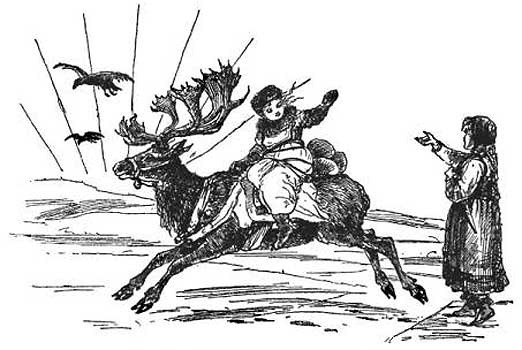
Fairy tale illustrations above: "East of the Sun, West of the Moon" by Kay Nielsen (1886-1957), "The Snow Queen" by Charles Robinson (1870-1937), "Snow White" by Trina Schart Hyman (1939-2004), "Beauty and the Beast" by Angela Barrett, and "The Snow Queen" by A.W. Bayes (1832-1909).
Terri Windling's Blog
- Terri Windling's profile
- 707 followers





